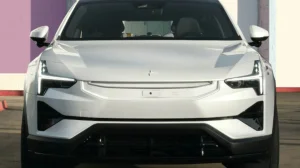Weak sales force Stellantis to pause factories
The Alfa Romeo Tonale, the Dodge Hornet and other vehicles are suffering pauses that reflect the pressure of the current automotive market

2025 has not been an easy year for automakers, and Stellantis is proof of that. The company that brings together brands such as Jeep, Alfa Romeo, Fiat, Dodge, Opel and DS, is facing a storm of figures that do not add up.
Also read: Volkswagen Group brand delays electrification plan
With sales declining and models that fail to consolidate, the multinational decided to reduce its production rate to avoid inventory accumulation.
You can read: Jeep's Gladiator 4xe plug-in hybrid will not see the light of day
The adjustment comes at a time when the global industry is marked by the transition to electric, fierce competition and changing consumer preferences. Stellantis, which in recent years had been striving to expand its range of hybrid and electric vehicles, now finds itself in the awkward position of having to halt some of its most recent projects.
Alfa Romeo Tonale: from expected success to setback
One of the most striking cases is that of the Alfa Romeo Tonale, a compact SUV that debuted with high expectations. However, its commercial performance this year has fallen far short of expectations. Through August, global sales of the Tonale fell 42.1%, with just 10,840 units delivered worldwide.
The outlook in the United States is even more complicated. In the first half of the year, only 1,156 units were sold, a modest figure for such a large and competitive market. This collapse forced the company to pause production at the Pomigliano plant in Italy, at least until the end of the year. Despite this setback, Stellantis is looking to breathe new life into the model. Efforts are focused on the arrival of the 2026 Tonale, which promises a thorough redesign in the hopes of making up for lost ground. Dodge Hornet: the "cousin" with similar problems The Dodge Hornet, manufactured on the same platform as the Tonale, is not immune to the crisis. Although its sales doubled those of the Alfa Romeo in the first half of the year, with 5,647 units sold, the year-on-year drop was 52% compared to 2024.
For the 2025 model year, Dodge only introduced a high-performance package called the Track Pack, with power tweaks and sporty accessories. However, these changes weren't enough to spark public interest.
The Hornet's base price is $31,400, but the market seems to be leaning toward other, more well-known competitors. For now, dealers will have to work with existing stock while production remains halted.
Strategic pauses in Italy
Stellantis' decision focuses on the Pomigliano d'Arco plant in Italy, where both the Tonale and the Hornet are manufactured. Between September 29 and October 10, the assembly lines will be halted.
According to company spokespersons, this is a "brief pause" to adjust production to the reality of sales. However, there is speculation within the sector that it could turn into a longer stoppage, especially since the plant is also preparing for work on the new 2026 Tonale.
Fiat Panda: Another Blow in Europe
It's not just Alfa Romeo and Dodge models that are facing problems. The Fiat Panda, a historic vehicle within the Italian brand, is also suffering from declining sales. In Europe, its deliveries fell by 5% in recent months, leading Stellantis to temporarily suspend production between September 29 and October 6.
The Panda was even under discussion about its possible arrival in the US market, but with these negative figures, its future looks increasingly uncertain.
Opel and DS are not spared either
In the European branch of Stellantis, history repeats itself. Models such as the Opel Mokka and the DS 3 will go on hiatus between October 13 and 31. Although these vehicles are sold exclusively in Europe, the underlying problem is the same: excess inventory and weak demand.
The company explained that this is an "adaptation of the pace of production," a term that reflects the need to balance supply and demand. In other words, if the cars aren't leaving the dealerships, there's no reason to continue manufacturing more.
This outlook is forcing Stellantis to reconsider its strategy on several fronts. In the United States, the market seems to be leaning more strongly toward larger SUVs or more established hybrid and electric options.
In Europe, regulatory pressure toward electrification is accelerating portfolio changes, but at the same time complicating sales of traditional models.
The pause in production does not mean a definitive abandonment of these vehicles, but it does reflect the urgent need to rethink prices, features, and value propositions.The risk of losing relevance to rivals like Toyota, Volkswagen, or Hyundai is increasingly evident.
This news has been tken from authentic news syndicates and agencies and only the wordings has been changed keeping the menaing intact. We have not done personal research yet and do not guarantee the complete genuinity and request you to verify from other sources too.











